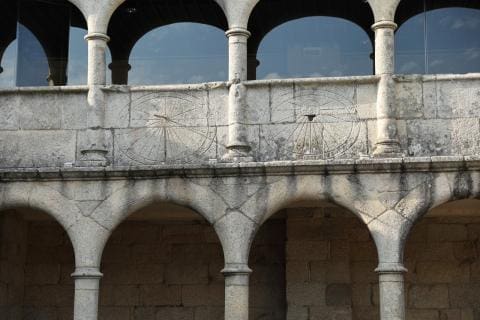The Cistercian monastery of Santa María de Xunqueira de Espadanedo has its origins in a High Medieval cenobium that was consolidated as Benedictine in the 12th century. At the end of the 12th century, it was integrated into the Cistercian order through the neighboring monastery of Montederramo. From the medieval period, it preserves the basilica-plan church with three naves ending in semicircular apses. In the temple, the stone altar, the baptismal font, and an interesting collection of historiated capitals stand out. In the Modern Age (16th-18th centuries), the Regular Cloister was rebuilt and later the Guesthouse and Porter’s Lodge were constructed ex novo. The church facade, like the tower, was rebuilt between 1801-1802. The heads of the medieval apses are adorned with modern altarpieces explained by the Counter-Reformation. The iconographic program of the temple revolves around two fundamental themes: the figure of Mary (main and entrance altarpieces) and the exaltation of Western monasticism in the figure of its founders, Saint Benedict of Nursia and Saint Bernard (Baroque altarpieces). Various activities take place in the Monastery, including art exhibitions in the Regular Cloister and, in mid-August, ‘Maridaxes no Solpor’: medieval music and tasting of typical products from Ribeira Sacra.

 Province of Ourense, Galicia
Province of Ourense, Galicia








